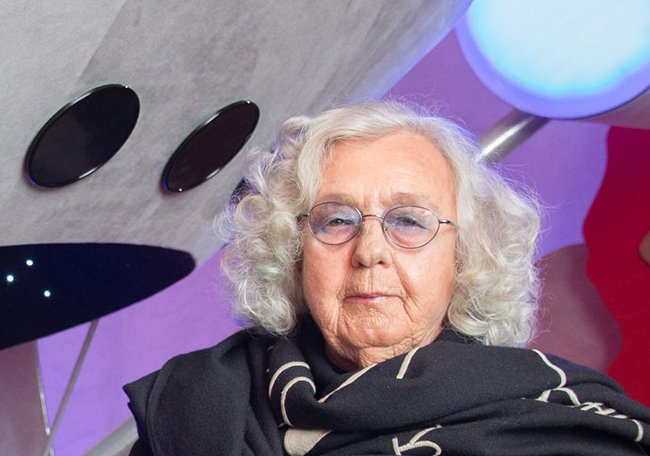The Artists
From the historical Avant-gardes linked to the Como area to the Italian protagonists of the artistic explorations of the late Nineties, abstraction is explored in its declinations and variants through the works on display, consonantly with the different artistic trends of the twentieth century. Accordingly, the exhibition comprises painters and sculptors who updated the language of geometry between the Seventies and Eighties, as well as the artists who gave life to an abstract language between sign and writing, leading to analytical and post-pictorial research. Other artists experiment with new abstract vernaculars, through photography, installations inclusive of extra-artistic objects and materials and the creation of optical, kinetic and environmental works.
Carla Badiali
#Born in Novedrate (CO) on November 9, 1907, Carla Badiali completed her first studies in France, in Saint-Etienne, where in addition to painting she also devoted herself to music. Back in Como, she attended artistic drawing courses at the National Silk Factory where she graduated in 1927. She probably arrived at abstraction as early as 1932-1933 and also thanks to her frequentation of other painters active in Como - from Manlio Rho, her teacher to Mario Radice and Aldo Galli - in the mid-thirties she reached a personal and distinctive style. She adheres to the Gruppo Valori Primordiali (Primordial Values Group) (1938) founded by the philosopher Franco Ciliberti and signs the Manifesto del Gruppo Primordiali Futuristi (Manifesto of the Primordial Futurist Group) (1941) which brings together rationalist architects and abstract painters. With them she exhibited for the first time at the Venice Biennale (1942) and at the Rome Quadriennale (1943). After the war, during which she actively participated in the Resistance, she reopened her thriving fabric design laboratory in Como and at the same time continued her artistic activity by updating her language towards technical experimentation in collages and works on wood. She died in Como on February 7, 1992.
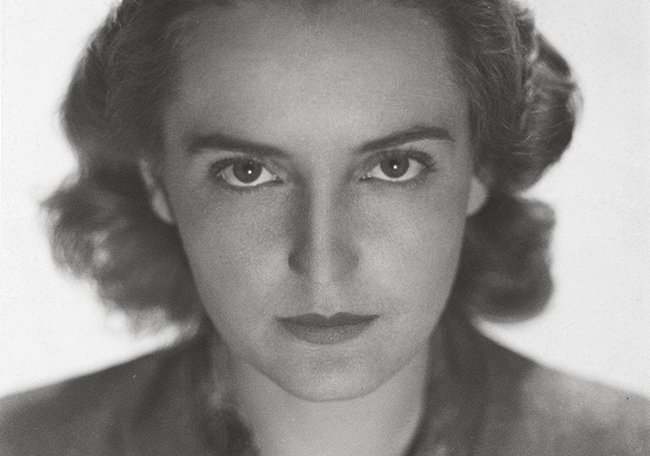
Cordelia Cattaneo
#She was born in San Fedele on August 28, 1921 and was still very young in the cultural and artistic environment of Como. After a brief apprenticeship in Mario Radice's studio, in 1942, at the age of twenty, she created some works which she exhibited at the XXIII Venice Biennale together with the other painters of the Como group and with the futurists led by Filippo Tommaso Marinetti, with whom she will also exhibit at the Quadriennale in Rome on the following year. However, her artistic career is very short due to a long illness that will force her to abandon painting. During the years of hospitalisation she will never stop writing to her brother, the architect Cesare Cattaneo, and to her teacher Radice, dreaming of being able to go back to painting. She died in Como on November 30, 1958.
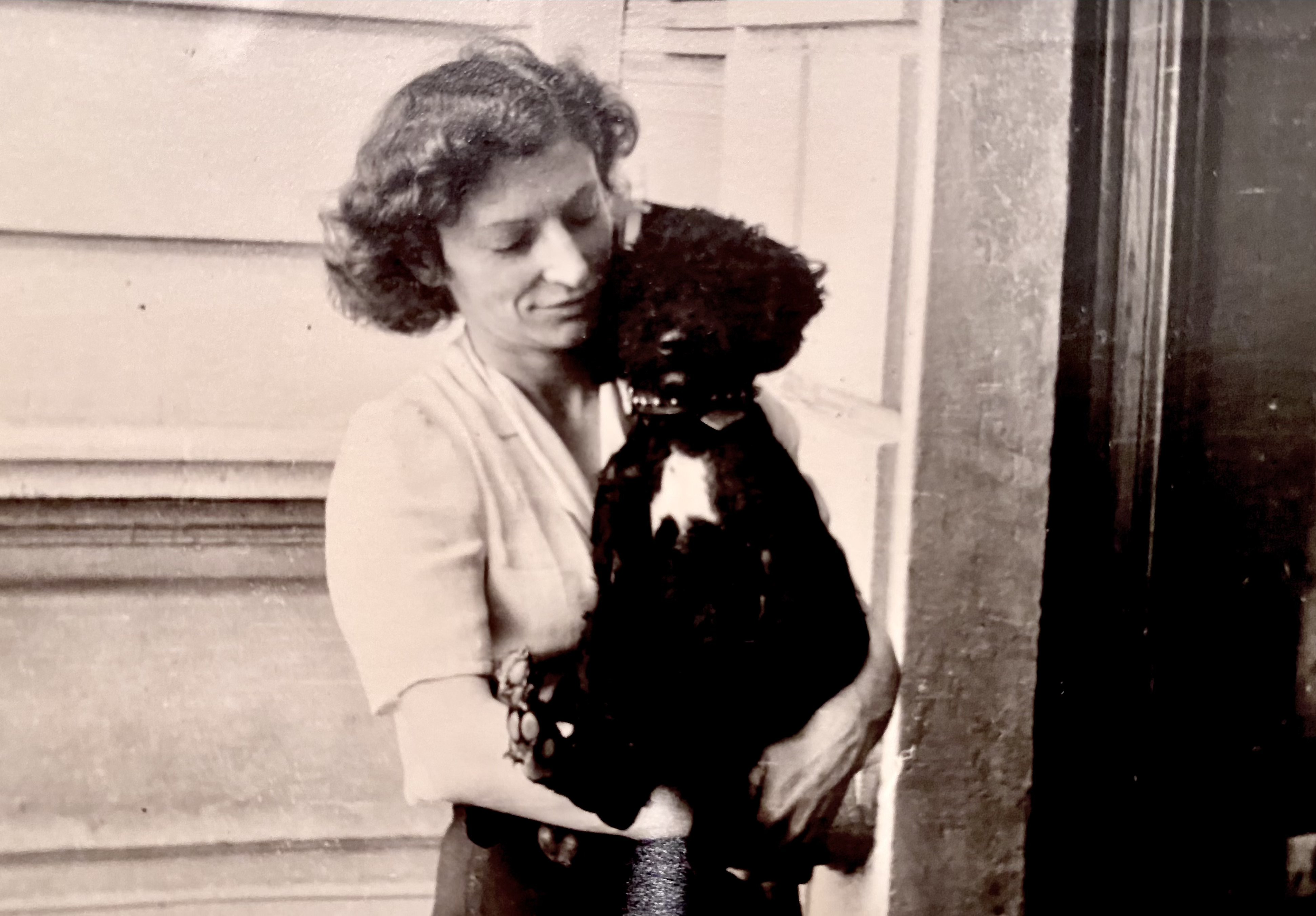
Giannina Censi
#Born to musician parents in Milan on January 25, 1913, Giannina Censi soon studied dance with Angelina Gini according to the method of Enrico Cecchetti, collaborator of the Russian ballets of Diaghilev. Her debut is at the Licinium theater in Erba in the classic tragedies staged by Ettore Romagnoli where she dances in the group of Jia Ruskaja, the Russian dancer discovered by Anton Giulio Bragaglia. In 1930 she left for Paris where she studied dance with Lubov Egorova and also approached Indian and Spanish dance and Eurhythmic dances. In 1931 she rose to fame interpreting Simultanina by Filippo Tommaso Marinetti and later the aerodances and tereodances, without music, at the Pesaro Gallery on Prampolini's paintings.
In 1931 at the Carducci Institute she recited and sang the lyric poem Stelle (Stars). She will also model for the volume Cultura fisica della donna ed estetica femminile (Physical culture of women and female aesthetics) (1933). Forced to retire in 1935 due to injury, she dedicated herself to teaching dance, enhancing Futurist dance. Active until the 1990s, she died in Voghera on May 5, 1995.
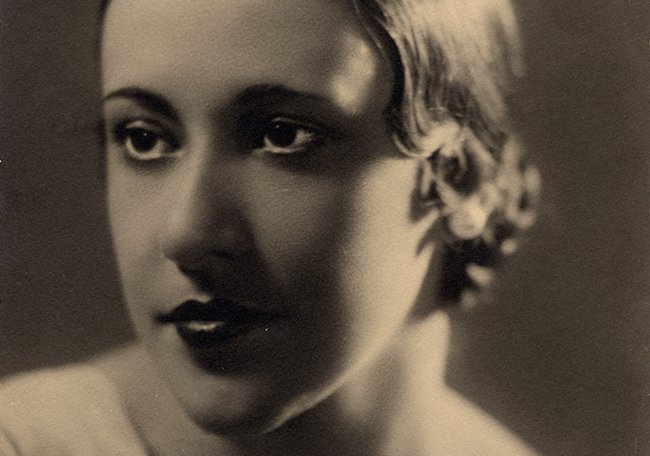
Bice Lazzari
#Beatrice Lazzari was born in Venice on November 15, 1900. She trained first at the Benedetto Marcello Conservatory and then at the Academy of Fine Arts in Venice, studying decoration. In the Venetian artistic environment of the 1930s, animated by the Artistic Circle of Palazzo dei Piombi and the Caffè on the banks of the Zattere, she frequented Carlo Scarpa and Mario De Luigi and devoted herself to abstract research, especially in the applied arts. In 1935 she moved to Rome, where she exhibited murals and decorative panels during the regime's major exhibitions. Between the end of the 1950s and 1963, she also brought abstraction into painting and approached the Informal movement: she abandoned oil paints to explore the application of other materials such as glues, sands, tempera and later acrylics. The artist died in Rome on November 13, 1981.
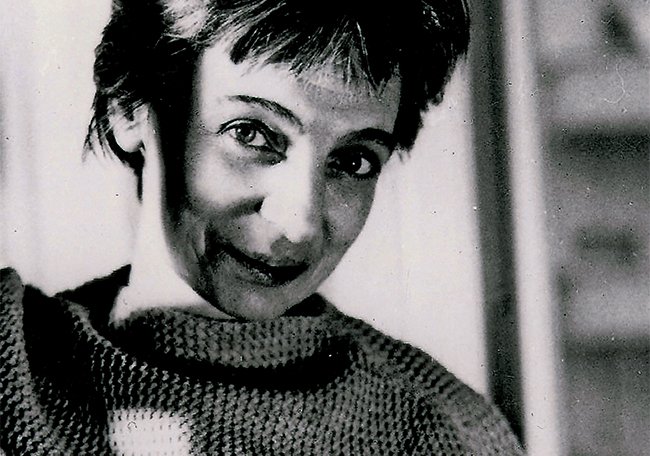
Carla Prina
#Born in Como on December 5, 1911, Carla Prina attended the Brera Academy of Fine Arts where she graduated in painting in 1936. On the same year she left for Rhodes where she enrolled at the Institute of High Culture, while the following year she was in Rome to attend the Free School of the Nude of the French Academy. Back in Como, in the 1940s she attended Manlio Rho's studio, a meeting place for abstract artists Mario Radice, Carla Badiali, Aldo Galli and architects Giuseppe Terragni, Pietro Lingeri and Carlo Cattaneo. With them in 1942 she exhibited at the XXIII Venice Biennale in the Futursita Pavilion and in 1943 at the Rome Quadriennale. In Como she meets the architect Alberto Sartoris, with whom she marries and moves to Lausanne. Together with him she is among the founders of the Escuela de Altamira, which will lead her to attend Juan Mirò. She died in Cossonay, Switzerland, on March 28, 2008.
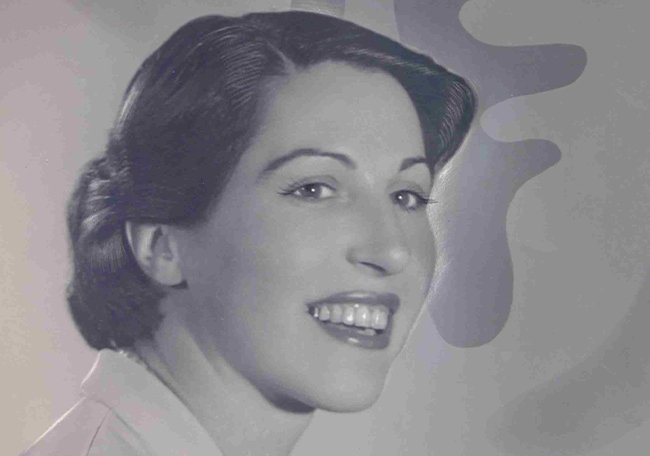
Regina Cassolo Bracchi
#Regina was born in Mede Lomellina in 1894. She attended the Academy of Turin and that of Brera in Milan, the city where she will spend most of her life. Her first solo exhibition in 1931 earned her the esteem of Edoardo Persico and Ugo Nebbia. She was invited to participate in the organised exhibitions of the Futurists (in 1934 she was one of the signatories of the "Technical Manifesto of Futurist Aeroplasty"), at the Venice Biennials (1934 - 36 - 38 - 40) and at the Quadrennial in Rome (1935/39). After the war years spent in Mede she made a decisive convergence towards an abstract sculpture that led her to join the MAC (Concrete Art Movement) in 1951 and later to develop her own "plastic" path using non-traditional materials such as Plexiglas and entering fully into the most relevant experiences of avant-garde art of those years. In 1953 she exhibited at the San Paolo Biennial in Brazil and in 1972 in “Milano 70/70” at the Poldi Pezzoli Museum. She passed away in 1974.
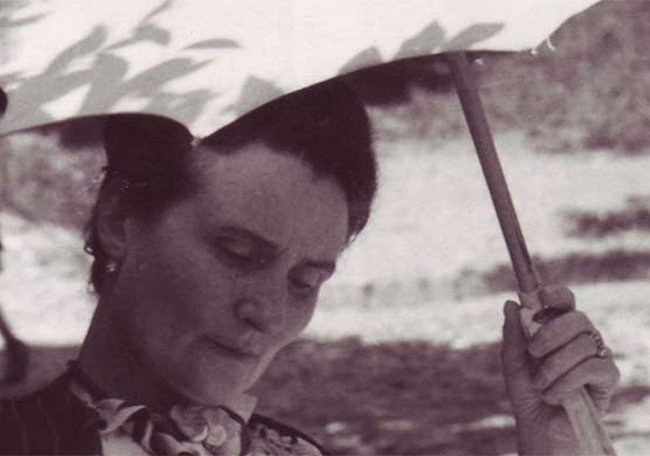
Carla Accardi
#Carla Accardi was born in Trapani on October 9, 1924. She attended the Academy in Palermo where in 1944 she met Antonio Sanfilippo. In 1946, after having attended the Academy of Florence for a few months, she was in Paris for an important study trip. In 1947, after moving to Rome, she was one of the founders of the abstract group Forma with Attardi Consagra, Dorazio, Guerrini, Perilli, Sanfilippo and Turcato. Her painting developed until 1952 in the context of concretist painting, known and assimilated in particular in Paris. From the mid-fifties she arrives at the poetics of the sign, in works generally set on black and white. The meeting in 1954 with the critic Michel Tapié will lead her to be included among the protagonists of art autre. In the 1960s, the artist further developed this research using more vibrant colours and also using a new material, sicofoil, which she would use in both two-dimensional and three-dimensional works. Carla Accardi disappears in Rome on February 23, 2014.
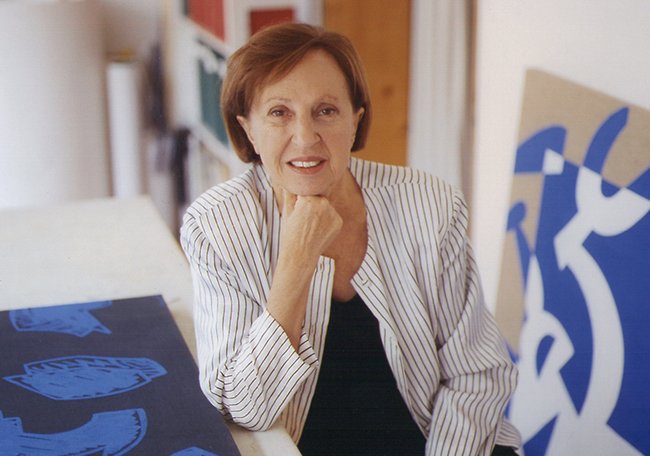
Irma Blank
#Irma Blank was born in Celle in Germany in 1934. German by birth, she moved very young to Italy where she still lives and resides, maturing in a climate of linguistic experimentation typical of the second half of the Sixties, in which exponents of the avant-garde of a minimal-conceptual matrix record, through an impersonal and de-subjectivated art, the time of one's own lived experience, being there, existing here and now. There are numerous exhibitions of Irma Blank in Italy and abroad. We recall the personal exhibitions at GAM (Major Art Gallery), Bologna (1977); Documenta 6, Kassel (1977); 38th Venice Biennale of Art, (1978); Fondation Nationale des Arts Graphiques et Plastiques, Paris (1980); Center Pompidou, Paris (1985, 2009, 2010 and 2013); PAC (Pavilion of Contemporary Art), Milan (1992); Querini Stampalia Foundation Museum, Venice (1996); Kunstmuseum, Düsseldorf (1997); Museion, Bolzano (2002, 2009, 2019); Museum of Modern and Contemporary Art, Rome (2007); MART (Museum of modern and contemporary art in Trento and Rovereto), Rovereto (2007); Palazzo Reale, Milan (2010); Mostyn Museum, Llandudno (2014); Kunsthalle, Vienna (2014).
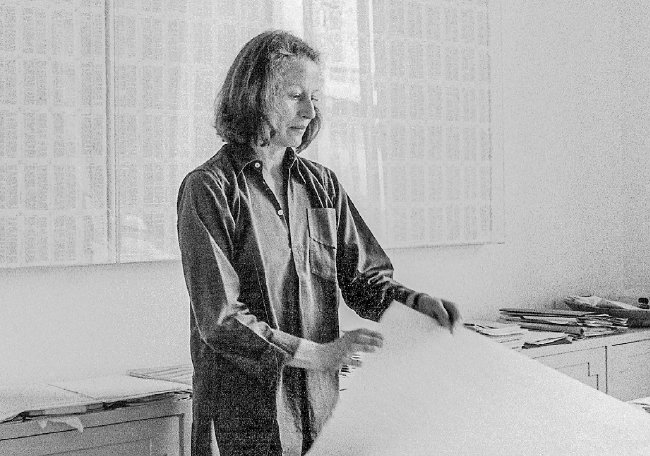
Betty Danon
#Istanbul, 1927 - Milan, 2002. Moved to Milan in 1956, she exhibited in several exhibitions in Italy and abroad. Among the group exhibitions: in 1977 Magma at the Museum of Castelvecchio (Verona), in 1978 Materializzazione del linguaggio at the Venice Biennale, in 1979 at the National Modern Art Gallery of Lisbon and the Westfälischer Kunstverein of Münster, in 1980 at the Venice Biennale in Il tempo nel museo, in 1981 at the Palazzo delle Esposizioni in Rome and at the São Paulo Bienal, where she also exhibited in 1982 at the Museo de Arte Contemporáneo. She voluntarily left the traditional exhibition circuits in the Eighties and continued her artistic activity in private until her death.
In recent years, her works have been exhibited in several group exhibitions: in 2019 Doing Deculturalization (Museion, Bolzano) and The Unexpected Subject: 1978 Art and Feminism in Italy (Frigoriferi Milanesi, Milan); in 2020 Writing by Drawing (Centre d'Art Contemporain, Geneva). A large part of her archive is conserved at the Mart of Trento and Rovereto (Archivio del '900, Betty Danon Fund).
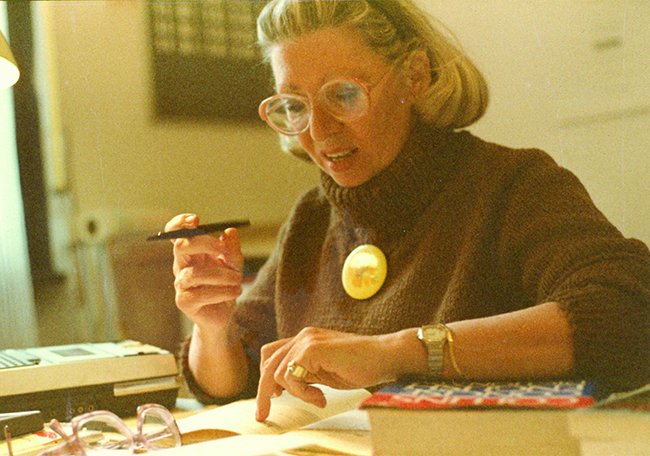
Nathalie Du Pasquier
#Nathalie Du Pasquier, an Italian-French painter, was born in Bordeaux (France) in 1957. She arrived in Milan in 1979 and began working as a textile designer. She will be a member of the Memphis group for which she designed fabrics, carpets, and some furniture and objects. In 1987 she decides to paint and abandons her activity as a designer. Since then she has exhibited her work regularly. in 2020 a major exhibition of hers was held in Rome at MACRO (Museum of Contemporary Art of Rome).
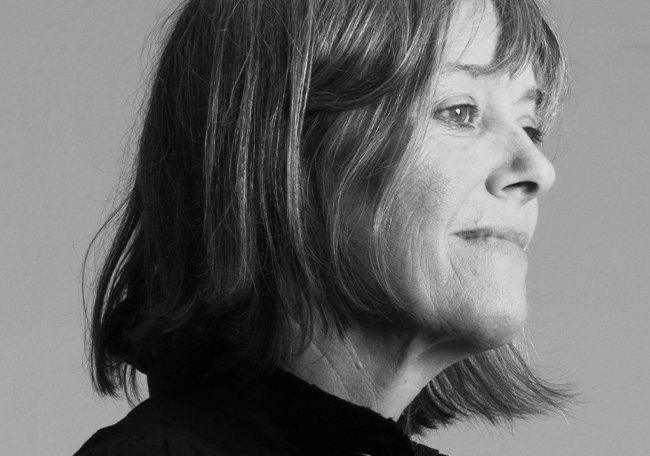
Chung Eun Mo
#Chung Eun Mo was born in Seoul in Korea in 1946. In 1980 she obtained a Master of Fine Arts from the Graduate School of Art and Architecture at the Pratt Institute in New York. Since 1987 she began to work in Italy for several years, in where she has her studio, and then in Tuscany and in Umbria. Since 2019 she has lived and worked in Milan. Since the 1990s she has exhibited both in museums and galleries in Europe, making her debut at the Städtische Galerie im Lenbachhaus in Munich (1992); she later exhibited at the Irish Museum of Modern Art, Dublin (1994) and in multiple galleries in Rome, Dublin and Seoul.
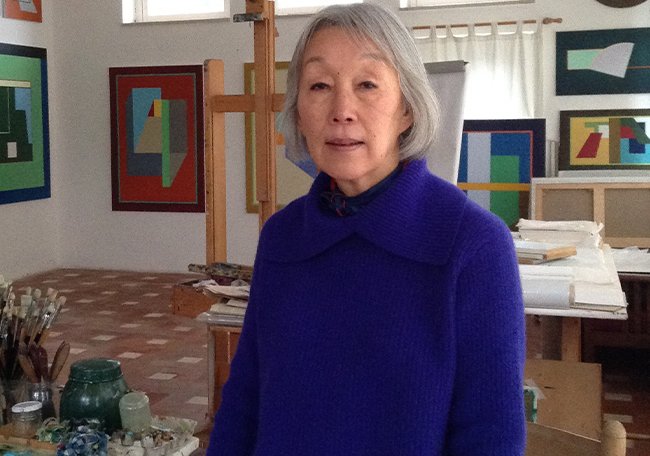
Fernanda Fedi
#Fernanda Fedi was born in Turin in 1940. She studied art in Milan and Bologna, graduating from DAMS (Fine Arts, Music and Performance Arts) and the Faculty of Architecture at Politecnico Milano (Polytechnic University of Milan). She wrote the essay: “Collettivi e Gruppi artistici a Milano. Ideologie e Percorsi 1968-1985”(Collectives and Artistic Groups in Milan. Ideologies and Paths 1968-1985) Ed. Endas, and has organised conferences and debates on "Donna Arte Società" (Women, Art and Society), 1978, "Donna Arte" (Woman Art), 1988 and "Creatività e Terapia" (Creativity and Therapy). She began exhibiting in 1968. She took part in: Rome Quadriennale, 1975; Venice Biennale 'Arte-Ambiente(Art-Environment), 1976'; Réalités Nouvelles, Paris 1976; XVI Bienal de Sao Paulo, 1981; Museum of Contemporary Art, Skopje, 1981; Grands et jeunes d'aujourd'hui, Paris, 1982. Personal exhibitions of the abstract/conceptual period include: La Darsena Gallery, Milan, 1972; Pianella Gallery, Cantù, 1972; Fumagalli Gallery, Bergamo, 1974-76; Galleria di Porta Ticinese Milan, 1980; Mostra antologica (anthological exhibition), Museum of Modern Art, Gallarate 1990; Tardy Gallery, Enschede (Holland) 1982; C.F.M., Luxembourg, 1991; Spazio Temporaneo (temporary space), Milan, 2017.
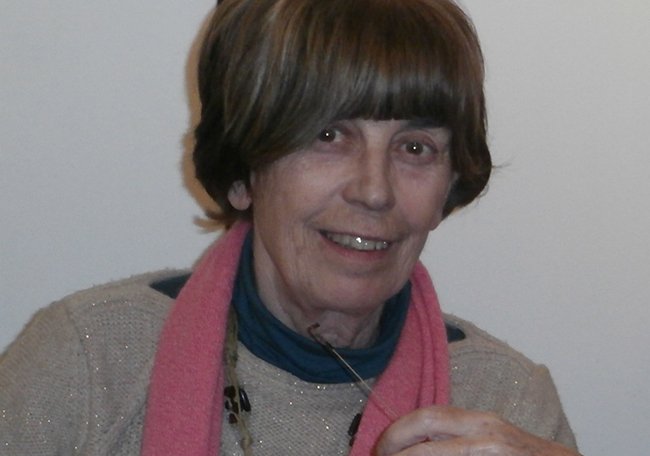
Tilde Poli
#Tilde Poli, born as Clotilde, in Bergamo in 1924, where she lives and dies in 2006.
After high school she studied at the Academy of Fine Arts in Milan and became a student of Guido Ballo. Her exhibition activity is very early, participating in the IV Bergamo Prize in 1942. Until the early 1960s she lived between Milan and Rome, participating in the cultural environment of both cities. Considered part of the path of post-World War II Italian abstraction, she soon returns to her hometown, where she lives for the rest of her life. She actively collaborates with the artistic life of Bergamo, an example above all the Teatro delle Nuovi with Bindo Missiroli. In the Nineties, 1990s and 1991, two historic exhibitions sanctioned the artist's international success. She participates in numerous and important events throughout her career.
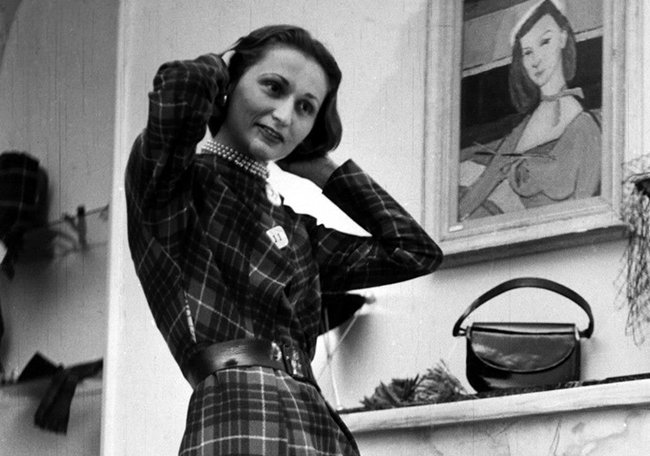
Carol Rama
#Carol Rama was born on April 17, 1918 in Turin. Around the mid-1940s, Felice Casorati's attention to the painter who followed and supported her must also probably be dated. In the immediate post-war period, she appeared in the life of the artist Edoardo Sanguineti then linked by a deep friendship, intellectually very fruitful. At the beginning of the Fifties she met Picasso, a beloved artist whose lesson he had already assimilated evident in many of his oils from the late Forties. In the same period, the bond with the painter, philosopher and art critic Albino Galvano, known in the mid-1940s, is also refined: with him she joined the Turin branch of the Mac Movimento Arte Concreta (Concrete Art Movement). Since 1951 Rama's works have therefore turned towards a decisive abstractionism; Albino Galvano himself signs several pages on Carol Rama, published on various occasions by the Salto Library in Milan, the headquarters of the Mac. It will be the Galleria Maggiorotto in Milan, starting from the Eighties, to fully enhance this artist's production. In 2003 she was awarded the Golden Lion for Lifetime Achievement on the occasion of the 50th Venice Biennale. She died in Turin on September 25, 2015.
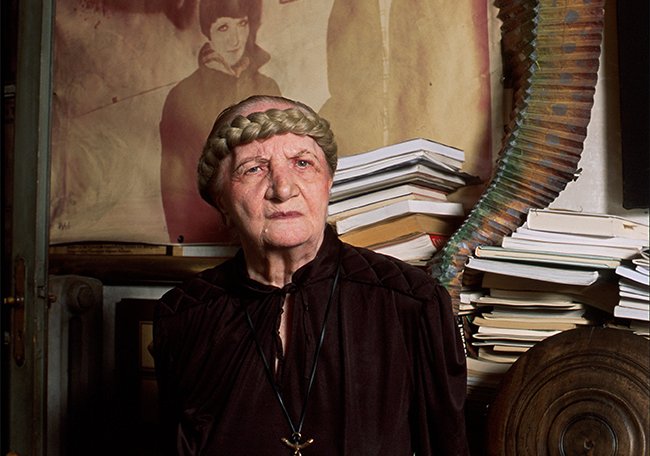
Fausta Squatriti
#Fausta Squatriti was born in Milan in 1941. Artist, storyteller, poet, art publisher, she has been at the centre of the Italian and international artistic and intellectual scene since the early 1960s. Squatriti has always worked in thematic cycles. In 1968, with the work La Passeggiata di Buster Keaton e Sculture Colorate (Buster Keaton’s walk and Coloured Sculptures), she began her international career. During the Seventies and throughout the Eighties, her artistic research became more severe and essential, she turned her attention to the essentiality of geometry with Sculture nere (Black sculptures) and the Fisiologia del Quadrato (Physiology of the square). At the beginning of the Nineties her research becomes more crude; denouncing the evils of humanity, series such as: Il Regno Animale (The Animal Kingdom); Il Regno vegetale (The Vegetable Kingdom); I ferri del mestiere (The tools of the trade); Ecce Homo; Beata solitudo, sola beatitudo.
Starting from the great Milanese retrospective dedicated to the artist in 2017, held at the same time as the Milan Triennale, at the Gallerie d'Italia - Intesa San Paolo museum and cultural centre and the Nuova Galleria Morone, a path of historical reinterpretation of Fausta Squatriti's work begins. The exhibitions curated by the Bianconi Gallery belong to this review.
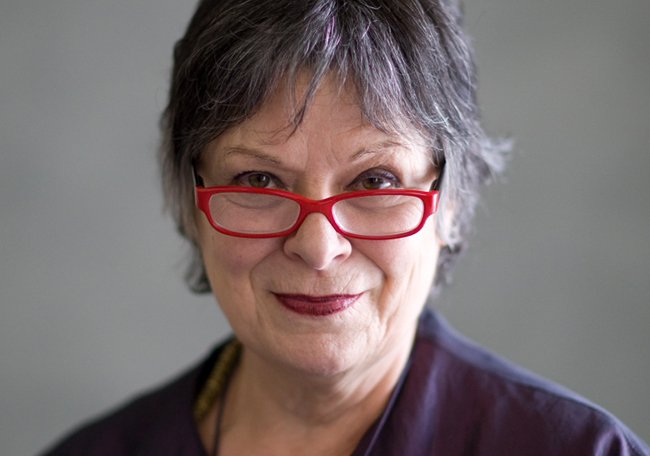
Carmengloria Morales
#Carmengloria Morales was born in Santiago de Chile in 1942. She has lived in Italy since 1953. She begins to paint in 1961 and her first solo show takes place in 1965 in Rome. She participates in the main exhibitions on analytical painting including Italy two, Museum of Philadelphia Civic Center; Un futuro possibile (A possible future), Palazzo dei Diamanti, Ferrara (1973); La riflessione sulla pittura (The reflection on painting), Acireale; Geplante Malerei, Westfälischer Kunstverein, Münster (1974); Documenta 6, Kassel; Bilder ohne Bilder, Rheinisches Landesmuseum, Bonn (1977); Abstraction Analytique, Musée d’Art Moderne de la Ville de Paris (1978); Radical painting, Williams College Museum of Art, Williamstown, MA (1984); Fundamental painting, Kunstverein, Arnsberg (1988); Abstrakt, Der Deutsche Künstlerbund in Dresden (1993); Karo Dame, Aargauer Kunsthaus, Aarau; New York Abstract, CAC, New Orleans (1995); Le soglie della pittura. Francia Italia (The thresholds of painting. France Italy) 1968-1998, Rocca Paolina, Perugia (1999); Unique Act, The Hugh Lane, Dublin (2008).
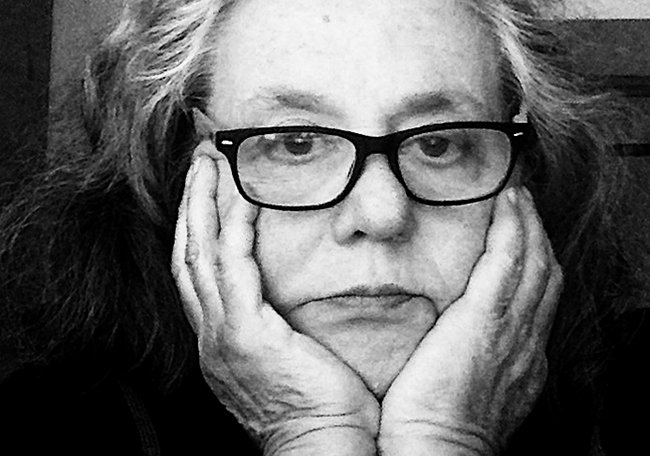
Maria Morganti
#Maria Morganti was born in Milan in 1965. She is an artist who has placed the experience of colour as a matter and trace of existence at the center of her practice. Marco Ferraris and Angela Vettese curated her first major solo exhibition in a public institution, at the Bevilacqua La Masa Foundation, Venice, in 2006. Since then she has been present in various exhibitions in museums and institutions such as Via Farini, Leporelli, curated by Milovan Farronato, Milan, 2007; Diario cromatico (Chromatic Diary), edited by Chiara Bertola, Querini Stampalia Foundation, Venice 2008; Castelvecchio Museum, L’unità di misura è il colore (The unit of measurement is colour), curated by Chiara Bertola, Verona, 2010; Casa Testori, Giardini squisiti (Exquisite gardens) in collaboration with Massimo Kaufmann, Novate Milanese, Milan, 2014; Il Sostituto: lo studio itinerante (The Substitute: the traveling studio), curated by Elena Volpato, GAM - Civic Gallery of Modern and Contemporary Art, Turin, 2019. In 2017 she inaugurated Svolgimento di un quadro (Unveiling of a painting), a permanent installation, curated by Chiara Bertola, in Mario Botta's cafeteria for the Querini Stampalia Foundation in Venice.
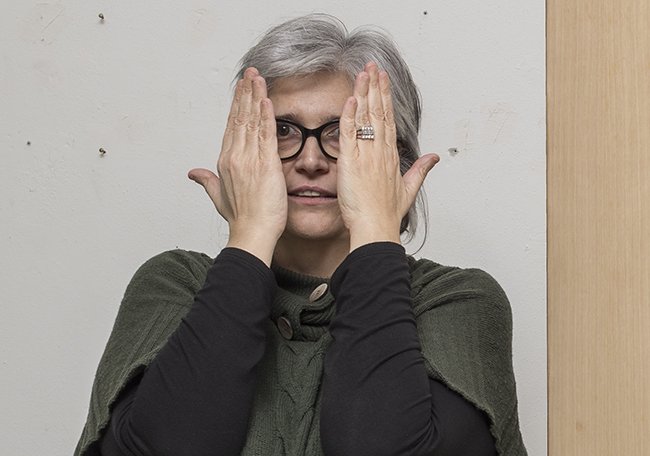
Marion Baruch
#Marion Baruch was born in 1936 in Timisoara, Romania. In 1948 Marion Baruch began studying at the Academy of Fine Arts in Bucharest, at that time heavily subservient to the Stalinist regime. The following year she emigrated to Israel, and so she continued her studies at the Bezalel Academy of Arts and Design in Jerusalem, where she was a student of Mordecai Ardon, a Bauhaus artist and a former pupil of Paul Klee. Four years later she exhibited at the Micra-Studio Gallery in Tel Aviv, receiving very positive reviews that led her to obtain a scholarship thanks to which in 1954 she attended the Academy of Fine Arts in Rome. This intense development, continually marked by new encounters and experiences, but also by unexpected twists, was reflected in her painting, often defined as “highly expressive”.
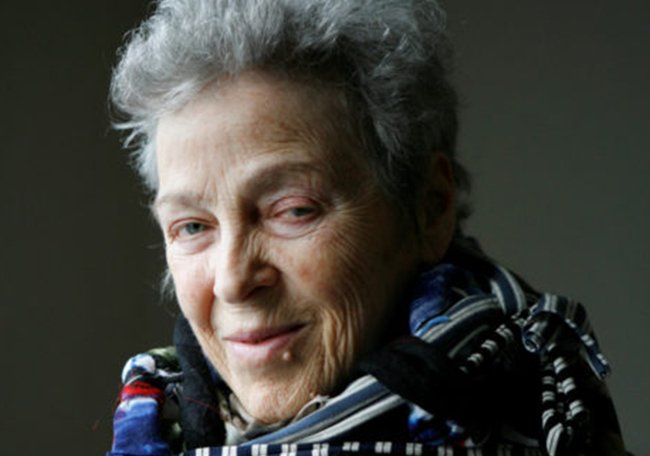
Renata Boero
#Renata Boero was born in Genoa in 1936. From 1986 to 2007 she taught at the Brera Academy of Fine Arts, Milan. In 2005 she is Visiting Professor at the University of San Diego, California. In 2010-2011 she held a series of conferences and exhibitions in Argentina. She has created the Cromogrammi cycles since 1965, Germinations and Ctò-nio-graphie, 2000s. The main personal exhibitions are: Musei Civici (Civic Museums), Monza (1988), Casa del Mantegna, Mantua (1992), Artiscope Gallery, Bruxelles (1994), Mestna Galerija in Nova Gorica and Umetnostna Galerija in Maribor, Slovenia (2007), National Museum of Culture and History of Belarus, Minsk (2008), Castello Aragonese (Aragonese castle), Ischia (2011), Museo Diocesano (Diocesan Museum), Milan (2014), "Kromo-Kronos", Museo del Novecento, Milan (2019). She also participated in: Biennale de la critique, Antwerp and Charleroi 1979-1980, XVI Biennale of Sao Paulo, Brazil (1981), Venice Biennale (1982, 1993), at the exhibitions "Io dico Io - I say I", Rome (2021), "Nothing is lost. Art and Matter in Transformation”, Bergamo (2021-2022). Boero lives and works in Milan.
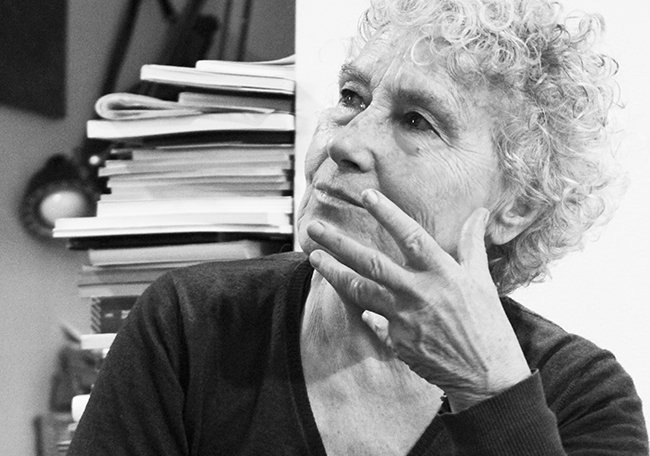
Mirella Saluzzo
#Mirella Saluzzo was born in Alassio, Liguria, in 1943 and subsequently lives and works between Ravenna and Milan. After high school she enrolled at the Brera Academy, Milan, where she came into contact with the protagonists of the Milanese art scene, in particular with Luigi Veronesi, whose course she passionately takes in Chromatology, and with Guido Ballo. Among her teachers there is also Luciano Caramel who more than any other will constantly follow the stages of her artistic career. Starting from research in painting, in the mid-1980s the artist moved towards plastic research centred on the use of aluminium sheets, which will characterise her work from then on. Numerous critics have been interested in her work (such as Caramel, Pontiggia, C. Cerritelli, R. Ferrario, A. Madesani, C. Spadoni, A. Veca).
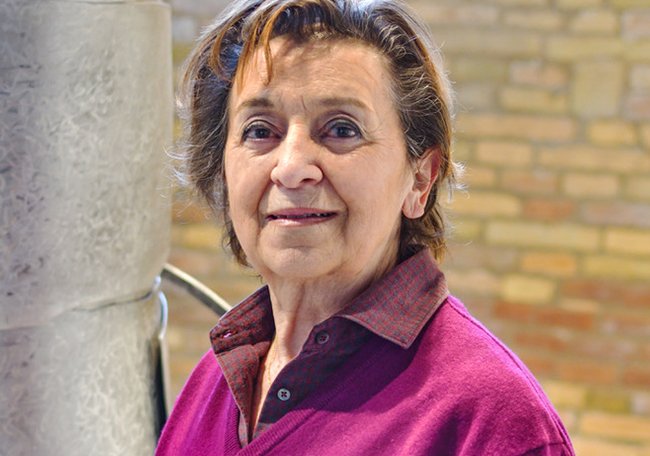
Gabriella Benedini
#Gabriella Benedini is an artist who lives and works in Milan. Born in Cremona in 1932, she attended the Paolo Toschi Institute in Parma and later, with occasional attendance at the Accademia di Brera in Pompeo Borra's painting course. From 1957 she lived in Paris, where she worked for several newspapers and obtained a painting studio at la Maison d' Italie. On her return to Milan, thanks to her friend Bepi Romagnoni she came into contact with the Bergamini Gallery, which hosted her first solo exhibition in May 1962. She held important personal and collective exhibitions in Italy and received important prizes throughout her career.
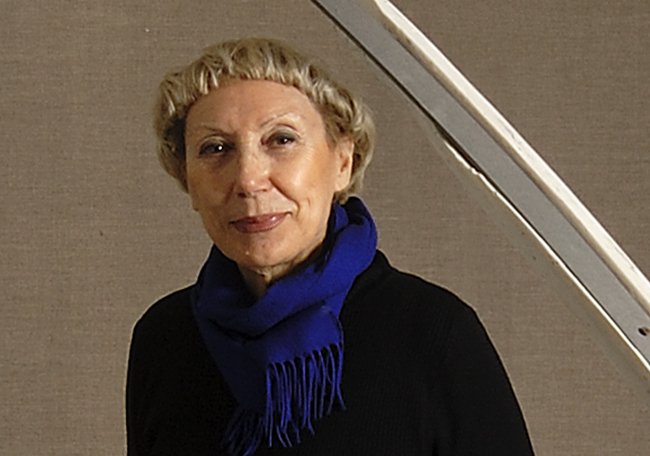
Luisa Albertini
#Luisa Albertini was born in Como on November 25, 1918 and died there on November 25, 2018, at the age of 100. Her training was essentially self-taught, with the exception of lessons in life drawing under the guidance of Piero Saibene. The artistic environment in Como, however, was a stimulus for her to experiment with techniques and materials from the outset. Her first works are portraits, graphite, charcoal and pastel drawings. From the post-war period she turned to other materials: initially enamelled terracotta, presented at the Milan Triennale in 1953, then copper and bronze, which are enamelled as well, exhibited at the Barbaroux in Milan in 1959, and at the Miricae Gallery in Rome in 1962. In the 1960s she began to produce large-scale works: fabric, cloth, canvas, jute, and then in the 1970s enamelled wood in which she used a simplified and abstract language. In the 1990s she turned to painting on canvas, which she devoted herself to until her last years of production, together with works on paper using watercolours, pencils, felt-tip pens and collage.
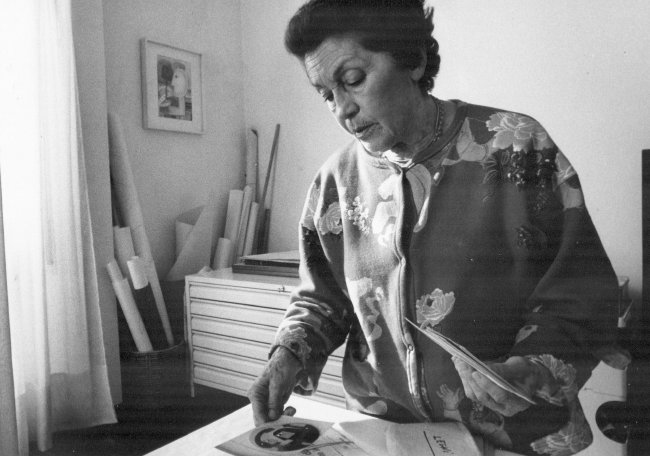
Franca Ghitti
#Franca Ghitti was born in Erbanno, in Val Camonica, in 1932. She studied at the Brera Academy in Milan, attended the Académie de la Grande Chaumière in Paris and the engraving course in Salzburg directed by Oskar Kokoschka. In 1963 she took part in the founding of the Centro Camuno di Studi Preistorici (Camuno Centre for Prehistoric Studies) and approached the study of the rocks of the Camonica Valley, inventing her first "Maps" on wooden tablets, with metal nets and nails. From 1969 to 1971 she lived and worked in Kenya, where she was commissioned by the Ministry of Foreign Affairs (Scientific and Technical Cultural Cooperation) to create the large cement-bound windows of the Church of the Italians in Nairobi. On her return to Italy in 1977, she devoted herself to various public works: between the 1980s and 1990s she held numerous exhibitions in Italy and abroad. Among her last works, between March and April 2010, she created the Porte del Silenzio (Door of Silence) and the furniture for the chapel of the New Hospital in Como. She died in her valley after a long illness on 8 April 2012.
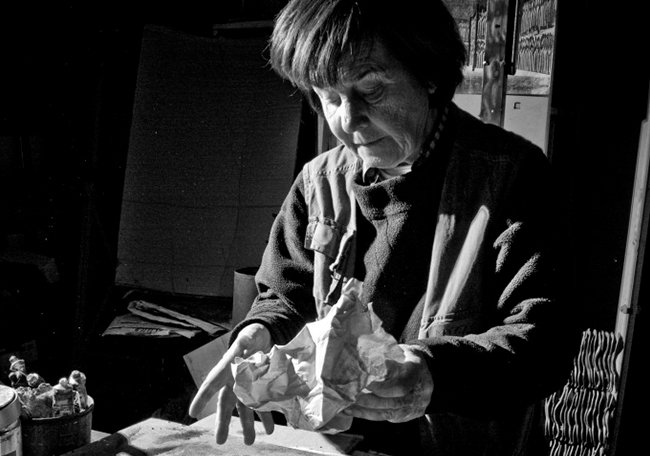
MARIA LAI
#The artist Maria Lai was born in 1919 in Ulassai, Sardinia. She moved to Rome at a young age to attend art school in Rome, then she attended courses at the Academy of Fine Arts, interested above all in the lessons of Arturo Martini.
In 1945 she managed to return to Sardinia and began teaching in the capital's primary schools.
A pupil of Renato Marino Mazzacurati and Arturo Martini, in 1955 she took part in the Rome Quadriennale. In 1971, she exhibited her first Telai (Looms) at the Schneider Gallery in Rome, approaching the themes of arte povera (poor art). She was chosen by the curator Mirella Bentivoglio as the leading artist in the section dedicated only to women artists at the Venice Biennale in 1978. In 1981, in Ulassai, she carried out the choral operation Legarsi alla Montagna (Bound to the Mountain), which anticipated the themes and methods of what would be defined as arte relazionale (relational art). In the 1990s she created a series of public art projects in Ulassai, including Stazione dell'Arte (Station of Art), the contemporary art museum dedicated to her. She died in 2013, in Cardedu.
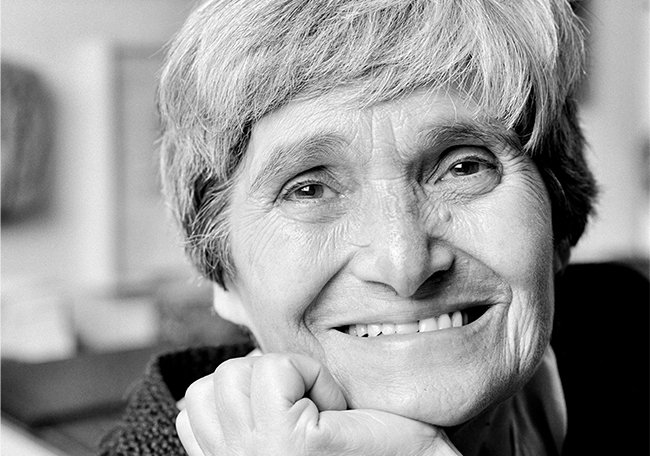
Claudia Peill
#Claudia Peill was born in Genoa in 1963. Graduated from the Academy of Fine Arts in Rome, she began her exhibition activity in the early Nineties. She has exhibited in private galleries, museums and public institutions in Italy and abroad including: Pecci Museum, Prato 2000; Künstlerhaus Vienna 2001; ICI London 2003; Martano Gallery, Turin 2004; Künsthalle, Düsseldorf 2005; Anna D’Ascanio Gallery, Rome, 2006; Galerie Rossella Junk, Berlin, 2007; Mara Coccia Gallery, Rome 2012; Andersen Museum, Rome 2014; The National Gallery, Rome 2015; Goethe Museum, Rome 2016; Anna Marra Gallery, Rome 2017; Gallen-Kallela Museum, Helsinki 2018-19; Great Beauty Contemporary Art Museum, Beijing 2019. She has made several permanent public works. She is present in numerous public and private collections. She lives and works in Rome where she teaches at the Academy of Fine Arts.
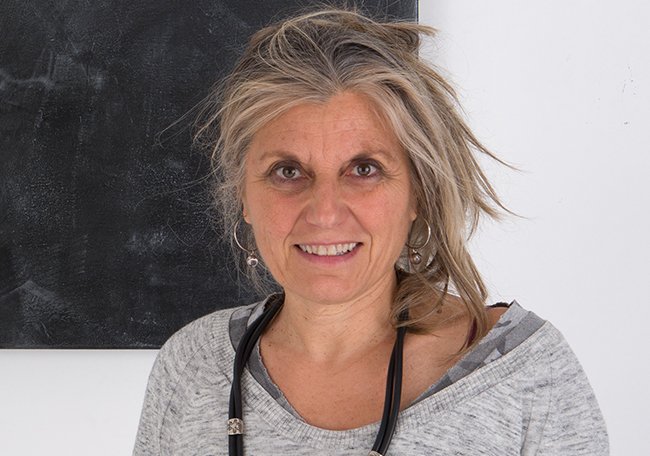
Luisa Lambri
#Luisa Lambri was born in Como in 1969 and lives in Milan. As a photographer of light and architecture, she reconstructs the experience of space not from a documentary point of view, but from an emotional point of view. The focus of her research is not architecture itself, but the subjective and emotional perception of a place or environment in relation to the artist's own memory. Often working in series, she isolates details such as corners, doors and windows and different qualities of light to build personal and intimate readings of the environments. It is possible to recognise in her photographs references to abstract geometric painting of the early twentieth century, to the Light and Space movement of Southern California, to Brazilian neo-concretism and to Minimalism. The Pac (Pavilion of Contemporary Art) in Milan dedicated an important personal exhibition to her in 2021.
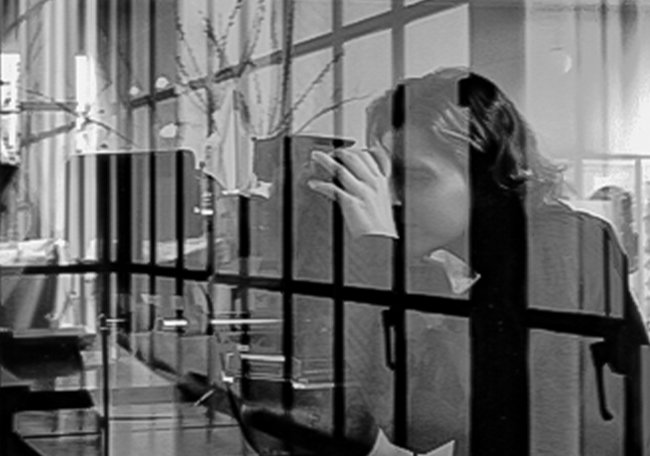
Mirella Bentivoglio
#Mirella Bentivoglio, poet, artist, critic, curator, was born in Klagenfurt in 1922. She trained between German-speaking Switzerland and England. Since her early youth, she has been author of books of poetry in Italian and English. Her works are representative of the union between verbal language and image, close to the verbovisual currents of the international artistic neo-avant-garde of the second half of the 20th century. She took part in important Italian and international exhibitions, for example at the Venice Biennale, the Centre Pompidou and the Moma (Museum of Modern Art), becoming a protagonist of experiments associating writing and image and of linguistic interventions on objects and environments. She passed away in 2017 in Rome.
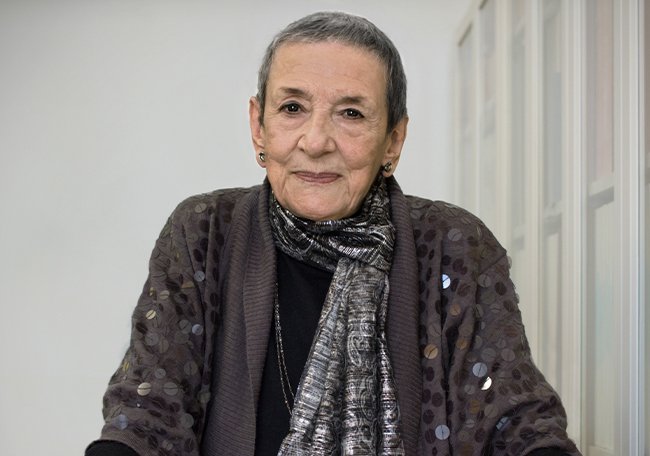
Alessandra Bonelli
#Alessandra Bonelli was born in Milan in 1935. She studied at Brera at the Liceo Artistico and set design at the Accademia under Enrico Prampolini and Tito Varisco.
She taught at Brera at the Liceo Artistico and set design at the Academy. In 1958/60 she created Le Jeu de Robin and Marion by Adam de la Halle for the Teatro di Corte di Villa Olmo in Como. Alongside her experience in set design, she also worked as a painter, the only woman in the Mec Art (Mechanical Art) group and later, in the 1970s, among the protagonists of the Metamorfosi group, together with Gabriella Benedini, Lucia Pescador and Lucia Sterlocchi. In 1964 she had her first solo exhibition at the Artecentro Gallery in Milan, directed by Fiorella La Lumia, with whom she worked until 1992.
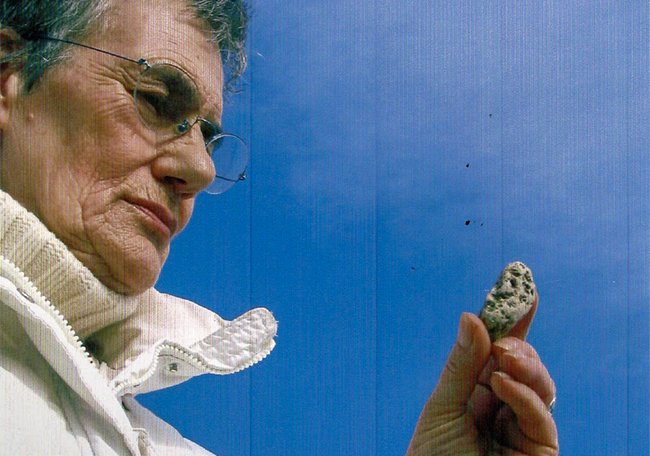
Lucia Pescador
#Lucia Pescador was born in Voghera in 1943. She graduated in Decoration with Giovanni Usellini at the Brera Academy, Milan, starting her artistic career in 1965. From 1977 to 1989 she was part of the Metamorphosis Group sharing research topics including the dialectic between culture and nature. Since the early 1990s, Pescador has been creating the Inventario di fine secolo con la mano sinistra (Turn-of-the-century inventory with her left hand), an aggregation of designs and objects that are constantly evolving and growing. The artist copies works of the twentieth century using her left hand (despite not being left-handed) to enhance the expressive and interpretative aspect, to evoke the process of deconstruction of the academic representation that took place during the twentieth century: “I copy in order to take back with the wrong hand the images that move me and belong to me. (…) I try to stop, by copying the images that fly on old sheets of paper and nailing them on the wall I try to reconstruct my sense of life”.
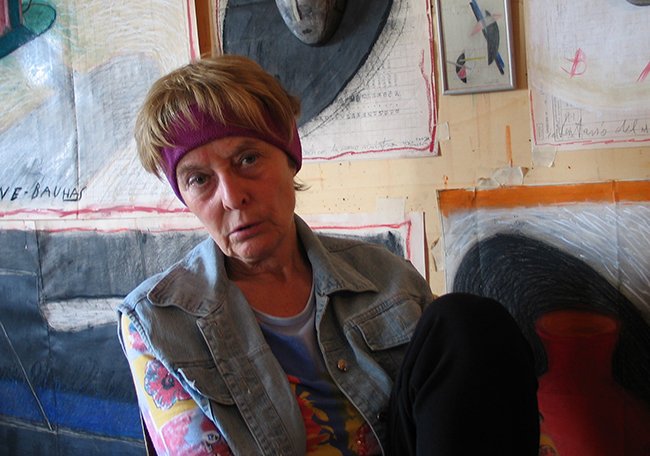
Eva Sørensen
#Eva Sørensen was born in 1940 in Herning, Denmark and died in 2019 in Mergozzo, Italy. At the beginning of the Sixties, after moving to Milan, she met the Milanese artistic environment which sees Piero Manzoni and Lucio Fontana among the main protagonists. In 1961 Sørensen created her terracotta sculptures in Albisola, where Lucio Fontana and the Danish painter Asger Jorn had made several sculptures in terracotta. In Albisola she won first prize at the Villa Gavotti exhibition. Later she moved to Ncestved in Denmark where she devoted herself to stoneware sculptures. In 1963 her first solo show takes place at the Birch Gallery in Copenhagen. Since 1968 she has exhibited in public spaces in Denmark through the NY Carlsberg Foundation which purchases some of her sculptures. In 1972 she moved to Pietrasanta in Tuscany and until 1977 she used different marbles for her works. In 1982 she participated in the 40th Venice Biennale in the Danish Pavilion with works in green granite.
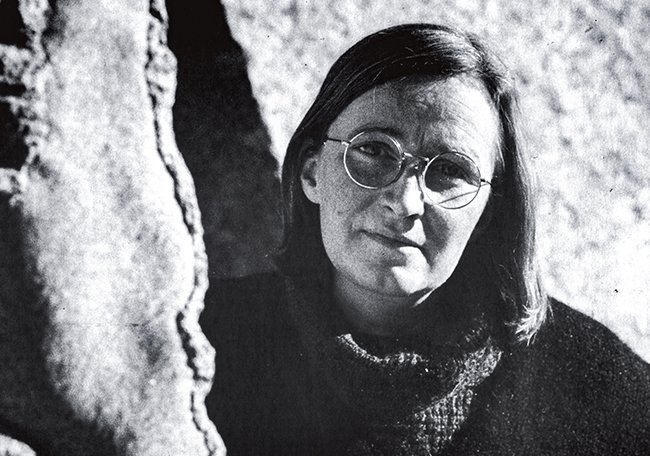
Sonia Costantini
#Sonia Costantini was born in the province of Mantua in November 1953. From the very beginning, her artistic research has focused on the investigation of painting and mainly on the luministic values of colour. She starts exhibiting in the early 1980s. Numerous solo and group exhibitions in public spaces in Italy and abroad, including: PAC (Pavilion of Contemporary Art) in Ferrara, BCE (European Central Bank) in Frankfurt, Diözesanmuseum and Sankt-Anna Kapelle in Passau, Grand Palais in Paris, Kölnisches Stadtmuseum in Cologne, Palazzo Te, Palazzo Ducale and Le Pescherie Foundation in Mantua, Ethnographic Museum in St. Petersburg, Cloister of Bramante in Rome , Palazzo Sarcinelli in Conegliano, Bocconi University in Milan, Villa Contarini in Piazzola s / Brenta, Rocca di Senigallia, Cloister M9 in Mestre. She has exhibited in private galleries in Cologne, Munich, Frankfurt, Los Angeles, Vienna, Friburg and in several Italian galleries. The exhibition collaboration since 1995 with the Galleria Il Milione in Milan has been significant. Her works are present in various Italian and foreign collections, including the Giuseppe Panza di Biumo Collection.
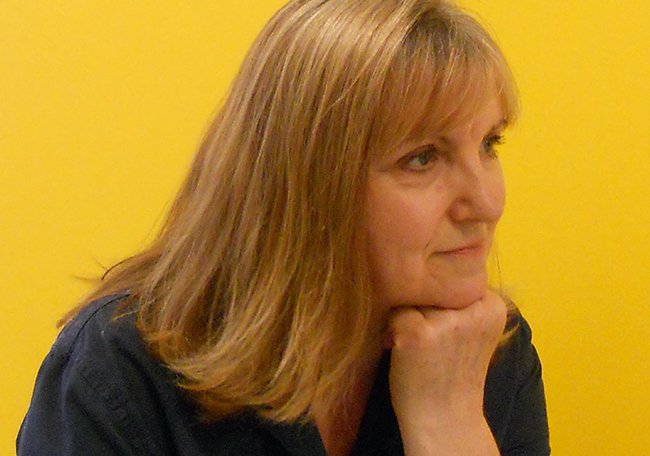
Lia Drei
#The artist Lia Drei was born in 1922 in Rome, daughter of art of the sculptor and painter Ercole Drei. After completing her classical studies at the Liceo Tasso in Rome, she graduated in Literature at the University of Rome and continued her studies at Columbia University in New York. In the United States she began teaching, before returning to Italy, settling permanently in Rome. Her artistic studies take place in particular under the guidance of her father. After participating in the experience of Group 63, she dedicated herself to the project Binomio Sperimentale p. together with the painter Francesco Guerrieri, her life partner. In addition to painting and artist's books, Lia Drei is dedicated to the creation of happenings and works-environment. In the Nineties, she approaches the aniconic painting. The Roman artist died in her hometown in 2005.
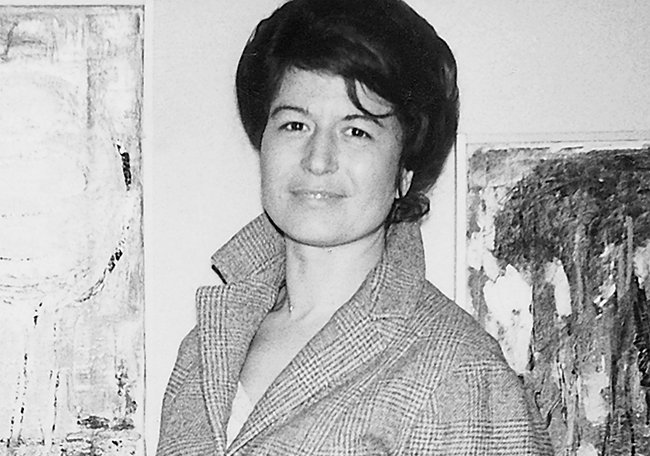
Nataly Maier
#Nataly Maier was born in 1957 in Munich. In 1978, after completing her studies in Philosophy at the Leibniz Kolleg in Tübingen, she attended the Staatliche Fachakademie für Fotodesign in Munich. Since the late 1980s she has dedicated herself to the two-dimensional overcoming of photography, applying images on three-dimensional supports to re-attribute a plastic value. Since 2002, her research has led to an overrun towards painting in which she always concentrates the expressive power of colour. Her first personal exhibition, in 1992, took place at the L’Attico Gallery in Rome; in 2001 the exhibition Hommage an eine Sehnsucht at the Villa Romana in Florence and at the Goethe Loft in Lyone, in 2015 her personal Pregnanza del colore is hosted at the Calderara Foundation in Vacciago. She lives and works in Milan and Starnberg.
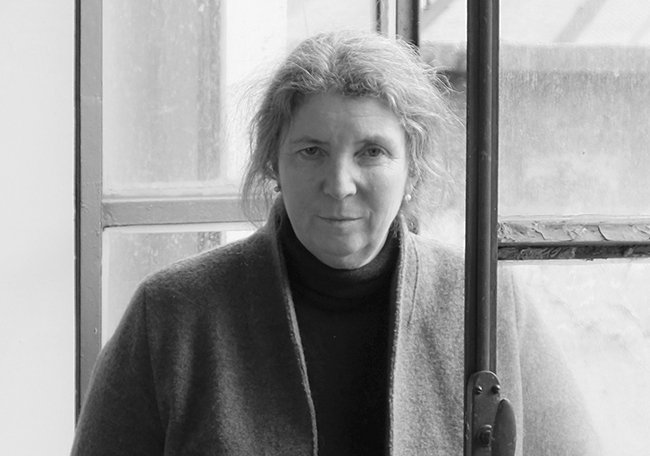
Alice Cattaneo
#Alice Cattaneo was born in 1976 in Milan. Her artistic training takes place between Glasgow and San Francisco. Her works are mostly made with low-tech materials: balsa strips, steel wires, glass blocks, pieces of iron, ribbons and bands; poor materials that do not deny their functional and daily use. Even when a line is created and appears to be "frozen" in space, it nevertheless appears as a three-dimensional trace of continuing motion. Cattaneo's sculptural constellation thus passes back and forth between construction and deconstruction, between real and potential being. Cattaneo realises her works in a volumetric and three-dimensional way, she seeks a sculptural motivation by placing the materials in a different balance. A balance reminiscent of that of a man walking on a thread stretched over the void. In her work there is always a duality: a going and coming back between simplicity and complexity, between the visible and the invisible.
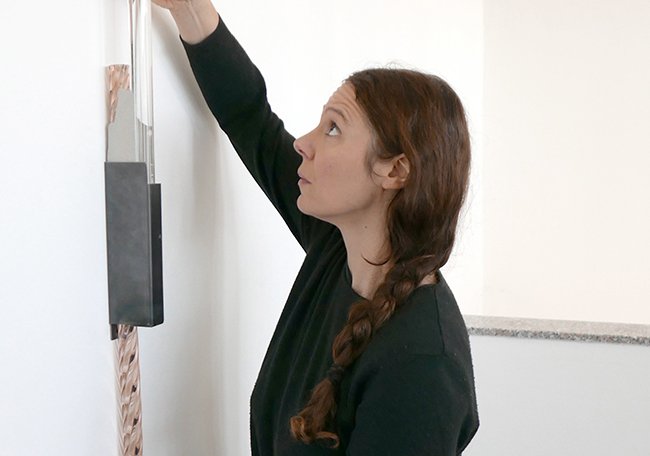
Emilia Maino, in arte Dadamaino
#On September 21, 1969, in Como, the artist Dadamaino, invited by the critic Luciano Caramel to participate in the event "Campo Urbano", presented the installation Illuminazione fosforescente automotoria sull'acqua (self-powered phosphorescent lighting on water). The project consisted in releasing a large number of polystyrene plates (20 x 20 cm) coloured with fluorescent paints in the waters of Lake Como. The artist's intention was to capture the public's attention by emphasising how important and essential the stretch of water was for the city of Como. The installation encountered some problems because the citizens, intrigued by the particular presence in the waters, collected a large number of plates, nullifying the artist's work and preventing the desired hypnotic effect.
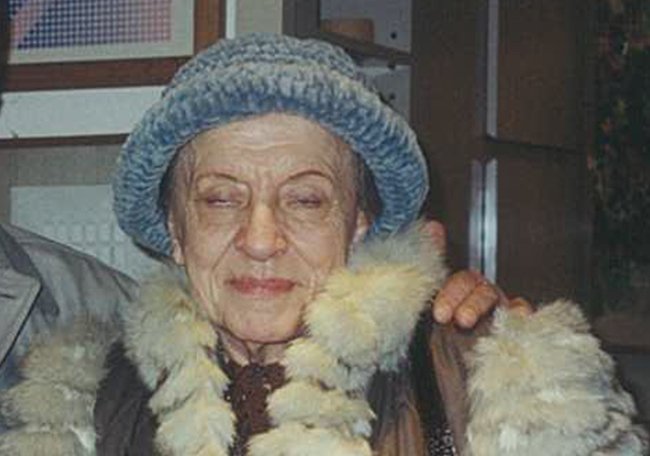
Elisabetta Di Maggio
#Elisabetta Di Maggio was born in Milan in 1964. In 1989 she graduated from the Academy of Fine Arts in Venice. In 1993 she participated in the XLV Venice Biennale of Art. In 1999 she attended an Advanced Course in Visual Arts at the A. Ratti Foundation in Como with Haim Steinbach, Visiting Professor. In 2000 she was selected for the PS1 Studio Program in New York. In the same year she participated in the first edition of the Furla Award for Art. Subsequently, in 2008, she exhibited at the XV Rome QUADRIENNALE. There are numerous collective and personal exhibitions in public institutions and national and international private galleries. She lives and works in Venice.
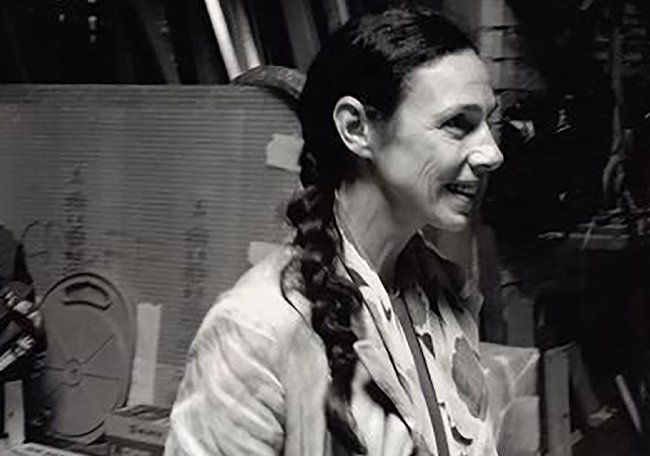
Grazia Varisco
#Grazia Varisco was born in Milan in 1937. From 1956 she attended the Brera Academy of Fine Arts, studying under Funi and Ballo. From 1960, as a member of Gruppo T, she took part in the Miriorama events and in the exhibitions of kinetic and programmed art. Once the group experience was over, she continued to experiment and exhibit independently, participating in important national and international exhibitions. From 1981 to 2007 she held the chair of the Theory of Perception at the Brera Academy in Milan. In 2007, she received the National President of the Republic Award for Sculpture from President Napolitano. In 2018 she received the A. Feltrinelli Prize for Visual Arts from the Accademia dei Lincei. Her works appear in museums and public and private collections in Italy and abroad, including MOMA (Museum of Modern Art) New York, Centre Pompidou, GNAM (National Gallery of Modern and Contemporary Art) Rome, Collezione Farnesina (Farnesina Collection), Quirinale Contemporaneo. Grazia Varisco lives and works in Milan.
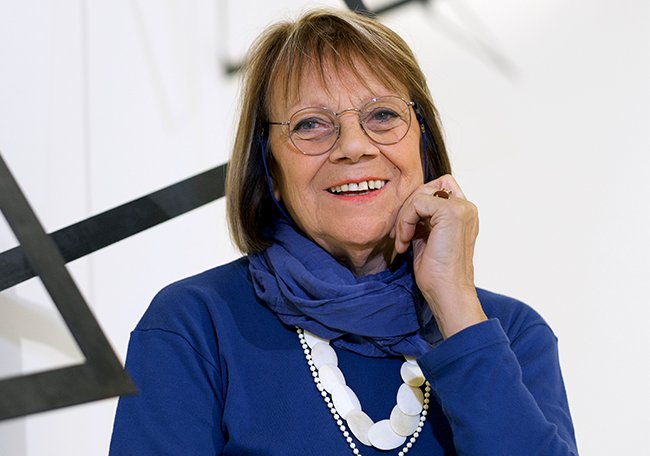
Paola Di Bello
#Paola di Bello is an artist born in Naples in 1961. She moved to Milan and is now director of the Department of New Technologies at the Brera Academy of Fine Arts and professor of photography at the same university. She was a self-taught artist, influenced by her father Bruno Di Bello, an important artist who, like his daughter, focuses on the technique of photography. Her work recounts her personal perspective on issues of citizenship and community in contemporary culture. She has edited numerous artist publications, continuing to invest time and effort into her personal research. Her interests also focus on the history of photography and she has published studies in this field over the years. Her works have been shown at distinguished solo and group exhibitions.
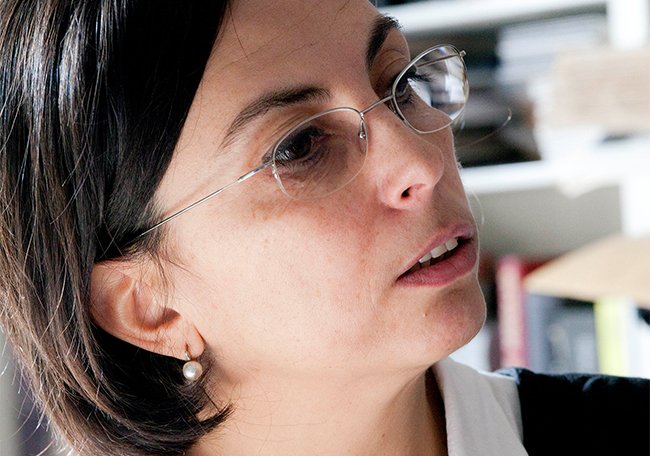
Nanda Vigo
#Nanda Vigo was born in Milan in 1936. She showed interest in art from an early age, having the opportunity to spend time with Filippo de Pisis and to observe the architecture of Giuseppe Terragni. After graduating from the Institut Polytechnique of Lausanne she leaves for San Francisco (USA) where she begins an important internship. From 1959 she frequented the studio of Lucio Fontana and got close to Piero Manzoni and Enrico Castellani. In that period between various travels for exhibitions across Europe, Vigo gets to know the artists and places of the ZERO movement in Germany, Holland and France. In the Sixties she works and realises the “Cronotopi” (Chronotopes), from the Greek chrónos (time) and tópos (place). In the Seventies she realised the series of works "Trigger of the Space", while in 1980 she created “Alfabeto cosmogonico“ (Cosmogonic Alphabet). On the other hand, works such as “Genesis”, “Deep Space” and “Galactica Sky” belong to the 2000s. On 9 September 2020 she received the "XXVI Compasso d'Oro for Lifetime Achievement" award.
